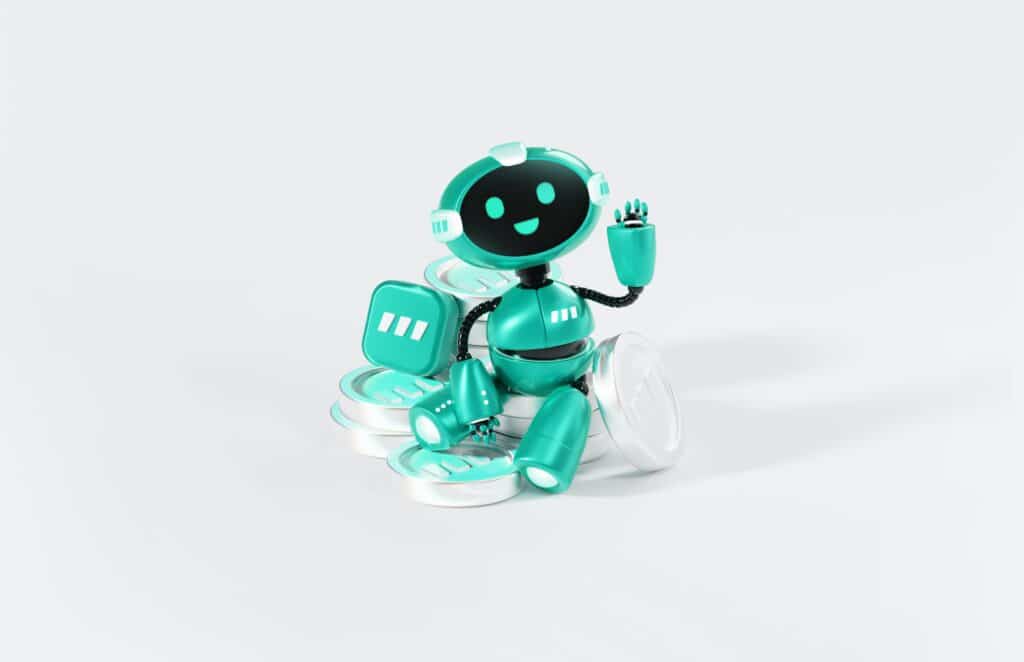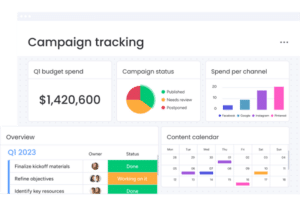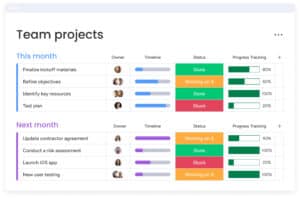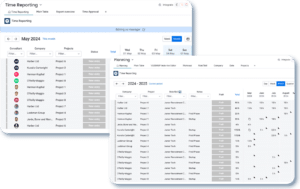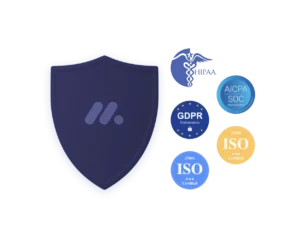Introduction
In today’s fast-paced business world, Human Resources (HR) departments are increasingly pressured to be more efficient, agile, and employee-centric. The challenge, however, lies in managing the myriad of complex tasks and processes that constitute HR workflows. From recruiting and onboarding to performance management and offboarding, each step is critical and often laden with manual, time-consuming activities. This is where streamlining HR workflows with automation tools comes into play, presenting a transformative solution for HR professionals.
By integrating automation tools into HR processes, organizations can significantly streamline HR workflows, enhancing efficiency and allowing HR staff to focus on more strategic, value-adding activities. In this article, we delve into the dynamic world of HR workflow automation, exploring how tools like monday.com and Make are not just changing the game, but are essential in modern HR practices. As we navigate through the complexities and solutions, keep in mind that streamlining HR workflows with automation tools is not just a fleeting trend, but a fundamental shift in how HR can and should operate in the digital age.
The Current State of HR Workflows
The landscape of Human Resources has been traditionally marked by an array of complex and labour-intensive processes. In many organizations, these workflows have remained largely manual, relying on paper-based systems, spreadsheets, and disjointed software solutions. This traditional approach, while familiar, often leads to inefficiencies, errors, and bottlenecks that can hamper the overall effectiveness of HR functions.
Manual Processes and Their Limitations
At the core of conventional HR workflows are manual tasks such as data entry, scheduling interviews, processing leave requests, and managing employee records. These tasks, while essential, are time-consuming and prone to human error. Manual data handling also poses challenges in data consistency and security, which are critical in the age of data protection regulations.
Fragmented Systems and Lack of Integration
Many HR departments grapple with disparate systems for different functions – recruitment, payroll, performance management, etc. This lack of integration not only slows down processes but also creates data silos, making it difficult to have a unified view of employee information.
Compliance and Regulatory Challenges
Keeping up with the ever-evolving labour laws and compliance regulations is a significant challenge in HR. Manual workflows make it harder to ensure compliance, requiring constant monitoring and updating of policies and records.
Impact on Employee Experience
In the digital era, employee expectations have evolved. Slow and cumbersome HR processes can lead to frustration and disengagement, affecting the overall employee experience and, ultimately, the organization’s ability to attract and retain talent.
Streamlining HR workflows with automation tools is not just about adopting new technologies. It’s about rethinking how HR functions can be optimized for efficiency, accuracy, and employee satisfaction. In the following sections, we will explore how automation tools are addressing these challenges and transforming HR workflows.
Omnitas Newsletter
Sign up for our monthly newsletter to stay up-to-date on our latest blog articles, videos and events!
Thank you!
You have successfully joined our subscriber list.
The Rise of Automation in HR
As organizations seek to enhance efficiency and employee satisfaction, the adoption of automation tools in HR has gained significant momentum. This shift is driven by the need to address the challenges of traditional HR workflows and the recognition of the vast potential that technology holds. Let’s explore how automation is reshaping the HR landscape.
The Transition from Manual to Automated Processes
The move towards automation represents a fundamental change in how HR tasks are executed. Automation tools are now handling routine tasks such as sorting resumes, scheduling interviews, and processing employee information. This transition not only reduces the workload on HR professionals but also minimizes errors and streamlines processes.
Integration of HR Systems
One of the biggest advantages of using automation tools in HR is the ability to integrate various systems and processes. Platforms like monday.com can be used for several parts of the HR realm, from recruiting and onboarding to feedback and offboarding, consolidating your tech stack and unifying HR operations into one single space. Furthermore, platforms like Make offer seamless integration and automation capabilities, bringing together disparate HR systems and saving time on manual and time-consuming tasks. This facilitates better data management, analytics, and decision-making.
Enhanced Compliance and Risk Management
Automation tools are equipped with features that help maintain compliance with labour laws and regulations. They can automatically update policies, track changes, and ensure that HR practices are in line with legal requirements, significantly reducing the risk of non-compliance.
Improving Employee Engagement and Experience
Automated HR workflows contribute to a more engaging and satisfying employee experience. By streamlining onboarding processes, managing employee queries through chatbots, and providing timely updates, automation tools help in building a more responsive and employee-centric HR environment.
Data-Driven HR Decisions
The rise of HR automation has enabled the collection and analysis of vast amounts of employee data. This data-driven approach aids in making informed decisions, identifying trends, and forecasting future HR needs, thus elevating the strategic role of HR in organizations.
In essence, the rise of automation in HR is not just about simplifying processes but also about empowering HR professionals to focus on more strategic aspects of their roles. As we continue to witness the evolution of HR workflows, it’s clear that streamlining these processes with automation tools is pivotal in driving organizational success.
Key Automation Tools for HR
In the pursuit of streamlining HR workflows, several automation tools have emerged as game-changers. These tools not only simplify routine tasks but also bring a level of sophistication to HR processes. Among them, platforms like monday.com and Make stand out for their robust features and flexibility. Let’s delve into how these tools are revolutionizing HR workflows:
monday.com for Comprehensive HR Management
monday.com has become a powerhouse in the HR automation space. Its intuitive interface and customizable workflows allow HR teams to manage everything from recruitment to employee onboarding and performance reviews efficiently. Key features include:
- Customizable Templates: Ready-to-use templates for various HR processes make it easy to get started and adapt as per specific needs.
- Visual Project Tracking: With its visual boards, HR teams can track the progress of recruitment campaigns, employee onboarding, and more, in real-time.
- Collaboration and Communication Tools: monday.com facilitates seamless collaboration among HR team members and with other departments, ensuring everyone is on the same page.
Make for Seamless HR Integration
Make offers a powerful way to connect various HR systems and automate workflows across them. It stands out for its ability to integrate diverse applications, streamlining data flow and process efficiency. Its capabilities include:
- Advanced Integration Options: Connect HR systems with other business tools like CRM, accounting software, and more, for a unified operational flow.
- Customizable Automation Scenarios: Create bespoke automation scenarios that cater to specific HR workflow needs, from managing leave requests to updating employee records.
- Real-Time Data Syncing: Ensure that all HR systems are updated in real-time, eliminating data discrepancies and enhancing decision-making accuracy.
These tools exemplify the versatility and efficiency that automation brings to HR workflows. By adopting such platforms, HR departments can not only streamline their processes but also elevate their role from administrative to strategic. As we delve deeper into each of these tools, it becomes evident that streamlining HR workflows with automation tools is an essential strategy for modern, forward-thinking organizations.
Implementing HR Automation in Your Organization
Adopting automation in HR is not just about choosing the right tools. It’s about effectively integrating these tools into your existing workflows. The implementation process is critical to ensure that the benefits of automation are fully realized. Here are key steps and best practices for implementing HR automation in your organization:
Assessment of Current HR Processes
Begin by thoroughly assessing your current HR workflows. Identify areas that are most time-consuming, prone to errors, or could significantly benefit from automation. This assessment will guide you in prioritizing which processes to automate first.
Choosing the Right Automation Tools
Based on the assessment, select tools that best fit your HR workflow needs. Consider factors like ease of use, integration capabilities, scalability, and support services. Tools like monday.com and Make should be evaluated for their specific features that align with your requirements.
Developing a Phased Implementation Plan
Implementing HR automation should be a phased process. Start with automating simpler, high-impact processes to gain quick wins and gradually move to more complex workflows. This approach helps in managing the transition more effectively and allows for learning and adjustments along the way.
Training and Change Management
A critical aspect of successful implementation is training HR staff and managing the change process. Ensure that your team is comfortable with the new tools and understands the benefits. Address any resistance to change by highlighting how automation will make their work more efficient and rewarding.
Continuous Monitoring and Optimization
After implementation, continuously monitor the performance of automated workflows. Gather feedback from HR staff and end-users to identify areas for improvement. Regularly update and optimize the automation tools to keep pace with changing HR demands and technological advancements.
Seeking Expert Assistance for Tailored Solutions
Implementing HR automation can be complex, and seeking expert guidance can significantly enhance the process. Partnering with specialists like us at Omnitas can provide several advantages. As top partners of both monday.com and Make, we can help you utilise the platforms’ full potential. Our expertise in identifying areas for improvement, customising implementation strategies, and providing comprehensive training ensures a seamless transition to automated workflows. We understand the nuances of various HR processes and can offer tailored solutions that align with your specific organisational needs. By leveraging our experience and knowledge, you can avoid common pitfalls, accelerate the adoption of automation tools, and maximise their impact on your HR operations. Our support extends beyond just implementation – we are here to assist in continuously refining and optimizing your HR automation strategies to keep up with evolving business demands and technological advancements.
By methodically implementing HR automation, organizations can significantly streamline their HR workflows, leading to increased efficiency, better compliance, and enhanced employee satisfaction. This process is not a one-time effort but an ongoing journey towards more strategic and effective HR management.

Future Trends in HR Automation
As we look ahead, the landscape of HR automation is poised for even more innovative and transformative changes. Staying abreast of these trends is crucial for organizations aiming to maintain competitive advantage and operational excellence. Here are key trends that are shaping the future of HR automation:
AI and Machine Learning in HR Processes
The integration of Artificial Intelligence (AI) and machine learning is set to take HR automation to new heights. From predictive analytics in talent acquisition to AI-driven performance analysis, these technologies will offer deeper insights and more proactive HR management.
Enhanced Employee Experience through Personalization
Future HR automation tools will focus more on personalizing the employee experience. Customized onboarding plans, individualized learning and development programs, and AI-enabled employee support systems are examples of how personalization will be at the forefront of HR automation.
Blockchain for Secure and Transparent HR Operations
Blockchain technology is anticipated to play a significant role in enhancing the security and transparency of HR processes. It could revolutionize areas like background checks, employee verification, and secure handling of personal data, providing a new level of trust and efficiency.
Increased Focus on Data Security and Privacy
As HR departments handle sensitive employee data, future automation tools will place a greater emphasis on data security and privacy. Compliance with data protection laws and regulations will be built into these tools. This ensures that HR data management is both secure and compliant.
Rise of Mobile HR Management
The trend towards mobile HR management will continue to grow, with more HR functions being accessible via smartphones and tablets. This shift will facilitate greater flexibility and accessibility for both HR professionals and employees.
Greater Integration with Overall Business Strategy
HR automation tools will increasingly be integrated with overall business strategies. This integration will enable HR departments to align more closely with business objectives, using data-driven insights to contribute to organizational growth and success.
In conclusion, the future of HR automation is not just about technological advancements. It’s also about a strategic shift in how HR contributes to the broader business goals. For organizations looking to stay ahead, understanding and embracing these trends will be key. Partnering with experts like us at Omnitas can help in navigating these future trends and leveraging HR automation tools for maximum impact.
Conclusion
As we have explored throughout this article, streamlining HR workflows with automation tools is not just a trend but a strategic necessity in the modern business landscape. Tools like monday.com and Make have demonstrated their capability to transform HR processes, making them more efficient, compliant, and employee-friendly. The shift towards HR automation is an investment in the future, enabling HR professionals to focus on strategic initiatives rather than being bogged down by manual, repetitive tasks.
As we step into an era where efficiency, data-driven decisions, and enhanced employee experiences are paramount, the role of HR automation becomes increasingly vital. It’s clear that embracing these tools is essential for any organization looking to thrive in a competitive and ever-evolving business environment.
Ready to Streamline Your HR Workflow?
If you’re ready to take the next step in streamlining your HR operations with automation tools like monday.com and Make, we at Omnitas are here to guide you. Book a free consultation with us below to explore how these tools can be tailored to your specific needs. Our expertise in HR automation will help you unlock new levels of efficiency and employee satisfaction.
Stay Informed and Inspired
If you found this article insightful and wish to stay updated on similar topics related to streamlining business operations, subscribe to our monthly newsletter below. You’ll receive the latest trends, expert tips, and insights right in your inbox. Stay ahead in the world of business automation.

